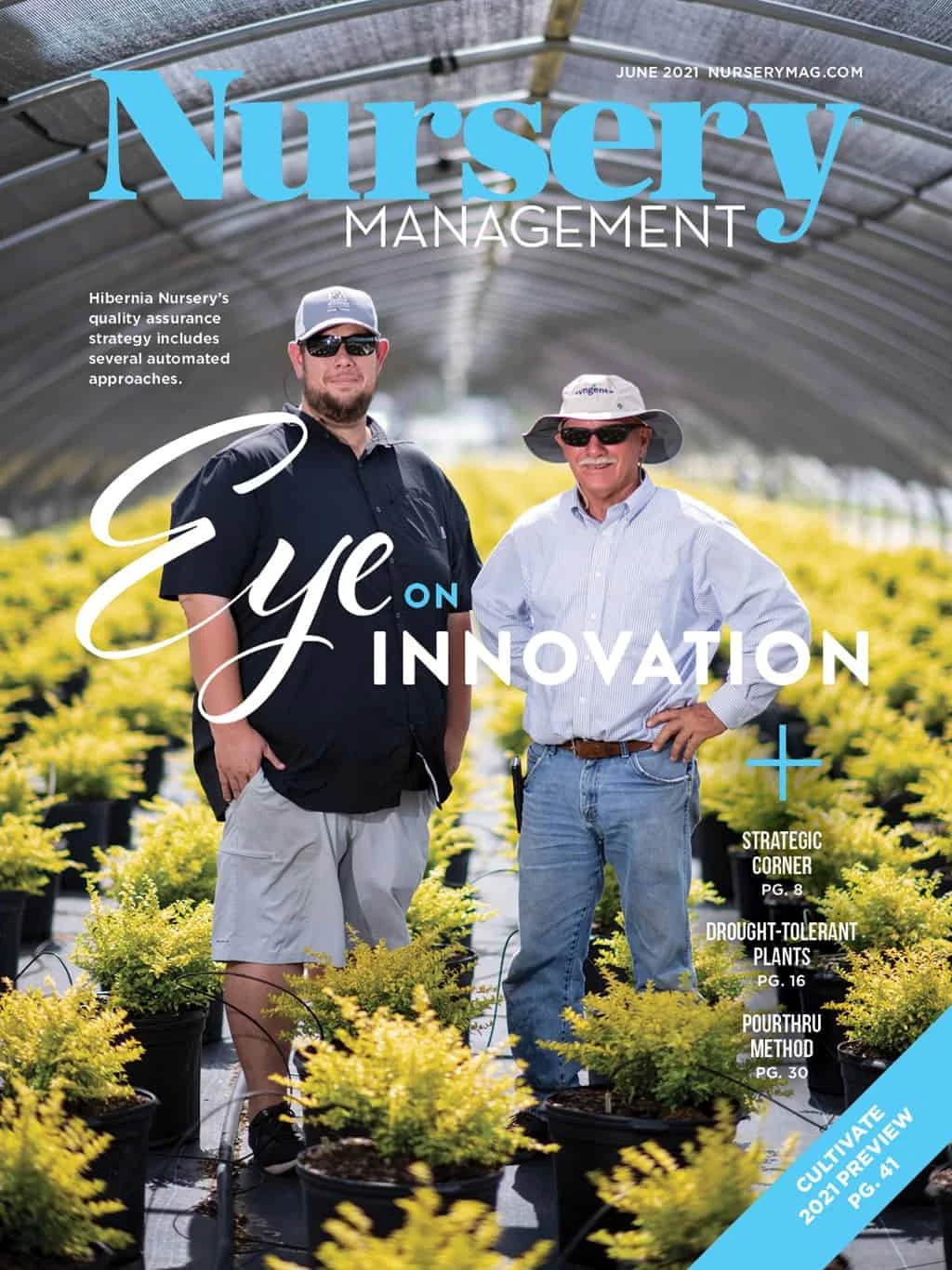
Q: What are some of the fundamental differences between a public breeding program and a private one?
A: The biggest difference is in a private breeding program, the new releases need to come pretty regularly. In an academic setting, we have more freedom to take a detour and explore interesting questions. We’re both here to introduce new plants and help growers, but university programs get to take a more circuitous path.
Another difference is that public universities publish all of their findings. When I started working with Hibiscus syriacus, there was no knowledge or information published on how flower color or eye spot was inherited, which made it difficult, and you basically cross everything with everything. But we recently published a paper (“Segregation of Flower Color and Eyespot in Althea”) in the Journal of the American Society for Horticultural Science about the heritability of flower color and eye spot and we named two different genes. So now anybody who’s breeding Hibiscus syriacus can take the data we generated and apply it to their breeding program.
Q: How do public breeding programs fund their work?
A: Funding is as diverse as the people who are breeding the plants and the plants themselves. Some may come from HATCH funding, which is federal funding that supports a faculty member. More commonly now, many of us at public universities are on nine-month appointments, yet a lot of breeding goes on during summer. Therefore, faculty must generate their own summer salary and that’s a challenge. Keep in mind not everyone in a public university gets a stipend for graduate students. I don’t get any funding for graduate students or research student workers.
I’m lucky to be in Oregon where there’s a, a pretty solid amount of funding that comes from the industry through competitive grants. There are also specialty crop block grants. Some university breeders can contract with companies to do specific breeding. But public universities need to be delicate when entering into a contract with a private company, so it doesn’t run contrary to the purpose of the land grant university. And there are some older, more mature public breeding programs that are generating some funds from royalties.
Q: Is there room for improvement regarding communication between public breeding programs and growers? If so, how can the two parties do better?
A: I feel like I do a pretty good job communicating with growers, but we always can do better. If you’re a grower in a big nursery producing state, I would encourage you to reach out to university horticulture departments and talk to them. Breeders want more input from growers, whether it’s positive or negative.
Public university breeding programs don’t have the marketing budgets like private companies, but I think we can work on a solution – potentially partnering with some of the state and national associations.
Q: What are some examples of groundbreaking breeding that have come from a public institution and which ones will you highlight during your presentation?
A: I want to include the USDA in my answer, and that means talking about Donald Egolf’s crape myrtles from the U.S. National Arboretum, and more recently Cecil Pounders work on the black leaf crape myrtles. Tom Ranney at NC State is doing incredible work in remaking old classics like his Chaenomeles Storm Series – these are incredible. Denny Werner did some amazing work with butterfly bush and sterility, as did the late Jon Lindstrom at the University of Arkansas. I’ll highlight work from Stan Hokanson at the University of Minnesota who released some cold-hardy azaleas. Zhanao Deng at the University of Florida is working on sterile nandina and lantana. I’ll show some work from David Byrne at Texas A&M and his rose breeding program. John Ruter at UGA and his work on hibiscus, in particular, has been really cool. And I’ll talk about my own program, like what we’re doing with cotoneasters, plus a lot more.

Want to go? For the Common Good: Public Breeding Programs Address the Needs of the Industry Saturday, July 10, 2:30 p.m.-3:30 p.m., A110
Dr. Contreras is a professor in the Department of Horticulture at Oregon State University where he teaches and manages the Ornamental Plant Breeding Program.
Explore the June 2021 Issue
Check out more from this issue and find your next story to read.
Latest from Nursery Management
- John Ruter shares UGA's latest woody and herbaceous ornamental plant breeding projects
- Conor Foy joins EHR's national sales team
- Pantone announces its 2026 Color of the Year
- Syngenta granted federal registration for Trefinti nematicide/fungicide in ornamental market
- Get to know Kayela Aeppli
- HILA 2025 video highlights: John Gaydos of Proven Winners
- Q&A with Justin Bartlett
- Be the best choice





